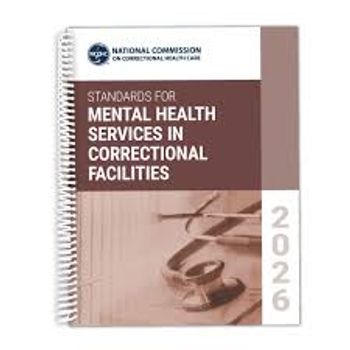
- Psychiatric Times Vol 24 No 10
- Volume 24
- Issue 10
Evolving Issues in Correctional Psychiatry
There is no disputing that the rapidly escalating rate of incarceration during the past decade in the United States has been associated with an increasing number of imprisoned individuals with a mental illness. Research indicates that as many as 20% of inmates in jail or prison are in need of psychiatric care, frequently because of a serious mental disorder.
There is no disputing that the rapidly escalating rate of incarceration during the past decade in the United States has been associated with an increasing number of imprisoned individuals with a mental illness.1,2 Research indicates that as many as 20% of inmates in jail or prison are in need of psychiatric care, frequently because of a serious mental disorder.3-12 James and Glaze2 reported the following:
- Symptoms of mental disorders were higher in jail inmates than in prison inmates.
- Over 70% of inmates who had a mental health problem met criteria for substance dependence or abuse.
- Jail inmates who had a mental health problem were 3 times as likely as those who did not to report being physically or sexually abused in the past.
- Women had higher rates of mental health problems than men.
- State prisoners who had mental health problems were twice as likely as those who did not to have been homeless before their arrest.
- State prisoners who had mental health problems had longer sentences than those who did not.
- Rule violations and fight injuries were more common among inmates with mental health problems.
Although there are many similarities between persons with mental illness in jails and those in prisons, there are also significant differences related to the more rapid turnover in jails than in prisons and the higher rates of acute intoxication in persons newly admitted to jails. It is beyond the scope of this article to address the resultant differences in the mental health service delivery systems within these 2 types of correctional institutions. Despite the clear legal status differences between pretrial detainees in jails and inmates in prisons, the term "inmate" will be used throughout this article to refer to both.
There are numerous agencies and organizations that provide a wealth of information relevant to correctional health care systems, including the US Department of Justice's Bureau of Justice Statistics, the National Commission on Correctional Health Care (NCCHC), the Criminal Justice/Mental Health Consensus Project (established by the Council of State Governments), and the American Psychiatric Association (APA). Literature specific to correctional mental health care, which assists administrators and clinicians in establishing adequate mental health services within jails or prisons, is readily available.4,7 Unfortunately, the lack of resources (eg, mental health staff allocations, office and programming space, correctional officers for escorting purposes) has resulted in constitutionally inadequate mental health care in many correctional systems, which has led to inhumane conditions for many inmates with mental illness.13,14
This article will provide a brief summary of the following correctional psychiatry issues that have forensic implications and/or are very problematic within the correctional setting:
- Treatment of inmates with serious mental illness.
- Suicide prevention programs.
- Discharge planning services.
- Psychological effects of lockdown units.
- Input of mental health professionals during the disciplinary process.
Treatment of inmates with serious mental illness
In general, treatment of inmates with serious mental illness should be similar to that available to persons who are not incarcerated. The 3 essential elements required to establish a constitutionally adequate correctional mental health system are sufficient program space and supplies, enough trained and/or experienced mental health staff to identify mental illness and provide treatment, and inmate access to these resources within a reasonable timeframe.15
A variety of guidelines for correctional health care programs have been developed by national organizations, including the APA and the NCCHC.3,16,17 A useful framework for establishing mental health systems that address the issue of access to treatment is provided by these guidelines. The emphasis of the guidelines varies, based on the size and type of correctional facility and the particular focus of the organization making the recommendations.18
Essential components of a comprehensive correctional mental health system include appropriate access for inmates to various levels of mental health care, including a crisis intervention program, acute care program, a residential care program, and outpatient treatment services.19
Because of the inherently nontherapeutic environment of jails and prisons, the need for residential care has become apparent, especially in prisons and larger jails. These housing units within the correctional setting are for inmates with serious mental illness who do not require inpatient treatment but do require a therapeutic milieu because of their inability to function adequately within the general population. These units may be known as residential treatment units, intermediate care units, supportive living units, special needs units, psychiatric services units, or protective environments. They are frequently designed to house 30 to 50 inmates per housing unit, which allows cost-effective staffing.19-21
There is little controversy concerning the need for these units in providing treatment for inmates with a serious mental illness, compared with the inmates who are housed in segregation units known as administrative segregation, disciplinary segregation, or prehearing detention units. These segregation units, which are often without programming space for out-of-cell activities (eg, educational classes, anger management classes), are characterized by the inmate being locked in a cell for 22 to 24 hours per day, with the duration of stay ranging from days to years. Inmates with a serious mental illness are frequently overrepresented in these lockdown units for reasons that often include inadequately treated mental illness. The suicide rate is also disproportionately higher for persons in these units.
The current standard of care requires a health screening before or shortly after an inmate's admission to a segregation unit to assess suicide risk factors, medical and psychiatric care needs, and health-related contraindications to segregation placement. The correctional facility should provide for regular rounds by a qualified mental health clinician in segregation housing units. During these rounds, each inmate should be visited briefly so that any emerging problem can be assessed.22
Those segregation inmates who are known to have serious mental health needs must be assessed on a regular basis by qualified mental health practitioners who may identify and promptly respond to emerging crises. For inmates with a serious mental illness who require segregation housing for security reasons and need a residential level of care, the specialized mental health program should offer 10 to 15 hours per week of out-of-cell structured therapeutic activities and at least 10 hours per week of unstructured exercise or recreation time.7 Implementation of such a program is logistically difficult and expensive because of the need for increased correctional officer staffing to comply with security regulations (eg, need for 2 correctional officers to escort each inmate) and construction of programming space.
Controversies surrounding these treatment guidelines include the use of metal enclosures that are designed to allow inmates to participate in group psychosocial therapeutic activities while physically separated from other inmates and staff. These holding cells are known as "therapeutic modules," as "programming cells," or by their detractors, as "cages." Typically, 6 to 10 modules are placed in a semicircle to allow group interaction during scheduled therapeutic activities. Inmates are not cuffed while in these cells, which allows for active participation in various therapies, such as art and music therapy and journaling, as well as increased physical comfort (in contrast to being cuffed for 1 to 2 hours during continuous therapy).7
Suicide prevention programs
Suicide was the third leading cause of death in prisons from 2001 to 2002, following natural causes and AIDS. The Bureau of Justice Statistics reported that in 2002 the rate of suicide was 14 per 100,000 prison inmates and 47 per 100,000 jail inmates.23
Although there is controversy over methodological issues in calculating the actual suicide rate in correctional facilities,13 there is no question that many suicides in jails and prisons are preventable. Research based on aggregated jail data has revealed a consistent profile for those who complete suicide: being young, white, single, a first-time nonviolent offender, intoxicated and confined in isolated jail housing; having a substance abuse history; and completing suicide by hanging by bed clothing within the first 24 hours of arrest.24
The growth of mental health services in correctional facilities has raised awareness of the problem of inmate suicide and has resulted in the development of effective suicide prevention programs that have become a standard of practice.25 APA and NCCHC guidelines provide recommended elements for a suicide prevention program: iden- tification, training, assessment, monitoring, housing, referral, communication, intervention, notification, reporting, review, and critical incident debriefing.3,16,17
Litigation relevant to inmate suicide is the most common form of alleged psychiatric malpractice and/or alleged gross negligence and deliberate indifference under 42 U.S.C.S.§1983 actions and the Fourteenth Amendment. Implementation of the elements of nationally recognized suicide prevention programs is clinically helpful and beneficial from a risk management perspective.
Discharge planning services
Planning for continuity of care for inmates receiving mental health services at the time of discharge to the community or transfer from a jail to a prison is an evolving standard of care and is certainly a best-practice issue. Case management services that are an integral part of discharge and transfer planning, include arranged appointments with mental health agencies, help obtaining entitlement benefits (eg, social security benefits, Medicaid), housing referrals, arrangements for an adequate supply of medications, and notification of reception centers at state prisons for inmates transferring from jails.
The extent of discharge planning services that should be provided to an inmate depends on factors such as the nature and severity of the inmate's mental illness, the scope of mental health services provided to the inmate during incarceration, and the inmate's ability to function on his or her own after discharge. Obstacles to effective transition to the community include homelessness, socialization skill deficits, cognitive deficits, comorbid substance use disorders, and difficulty in accessing the community mental health treatment system.
Psychological effects of lockdown units
The literature on the impact of long-term segregation on psychological functioning is methodologically problematic. There are few, if any, adequate scientific studies concerning the impact of locking an inmate in an isolated cell for an average of 23 hours per day with limited human interaction, minimal or no programming, and an environment that is designed to exert maximum control over the individual.7,26 There is general consensus among clinicians that placement of inmates with serious mental illnesses in these settings is contraindicated because many of these inmates' psychiatric conditions will clinically deteriorate or not improve.27
The psychological impact of long-term confinement on inmates who do not have a preexisting mental illness is less clear and more controversial. Despite claims to the contrary, it is not clear whether, how often, and under what circumstances such confinement causes persons to develop serious mental illness (eg, psychotic symptoms, disabling depressive or anxiety disorders). The literature is sparse and provides conflicting perspectives on this.28-33
While current, scientifically sound studies do not support claims that long-term segregation causes particular kinds of psychological harm to inmates who do not have preexisting mental illness, concerns raised by clinicians and advocates have resulted in a significant improvement in mental health services in correctional facilities. The long-term psychological effects of such environments are not known and await studies using sound methodology.
Class action litigation relevant to this issue has been a driving force in attempting to clarify the answer and in establishing standards of care.34,35
Mental health input into the disciplinary process
Correctional systems have procedures for punishing prisoners who violate jail or prison rules and for removing inmates from the general population for disciplinary or safety reasons. Major infractions can bring about significant punitive consequences for an inmate such as loss of good time (ie, a decrease in the sentenced time that needs to be served), transfer to a lockdown unit, or a referral to the district attorney for consideration of filing criminal charges.
Krelstein36 provides a useful summary of recent class action lawsuits challenging the quality of mental health care in the nation's prisons. As a result of this report, prison mental health care professionals have been called on to play an increasing role in the inmate disciplinary process.
Krelstein's national survey revealed that referral questions include whether an inmate is competent to proceed with disciplinary proceedings and whether mental illness may have contributed to the disciplinary infraction. Issues of responsibility were also found to be relevant in some jurisdictions.
There is considerable diversity among states' prison policies on the role of mental health services in the inmate disciplinary process.37 The policies are often poorly written, especially concerning relevant definitions and the nature of the required mental health assessments. For example, the definition of nonresponsibility is frequently vague or absent. The procedures are often unclear about whether the required mental health assessments are based only on a review of records or necessitate a face-to-face interview with the inmate. In addition, the prison's mental health clinicians frequently lack the forensic skills needed to address the issues of competency and responsibility, which exacerbates the problems associated with these policies and procedures. Hearing officers are also not properly trained in the use of mental health assessments in the disciplinary process.
Despite the problems associated with mental health input into the disciplinary process, many hearing officers find that input relevant to mitigating circumstances and dispositional recommendations is helpful. However, because of mental health staff resource and training issues, state officials should proceed with caution before incorporating mental health defenses (eg, not guilty by reason of insanity [NGRI]) into prison disciplinary proceedings. NGRI assessments require forensic training and are time-consuming. Similar to the low rate of successful NGRI pleas in the nonincarcerated population, it is rare that inmates would meet most nonresponsibility standards in prisons that have constitutionally adequate mental health services.
Policies and procedures should be developed that ensure notification of mental health staff when a caseload inmate is issued a serious (ie, major) rule violation notice, because the inmate's actions leading to the violation are often clinically significant. Such a process should also help provide mental health input, when indicated, to the disciplinary process. Mental health staff should be available to consult with the disciplinary hearing officers when a noncaseload inmate appears to be demonstrating symptoms of a serious mental illness.
Conclusions
Mental health systems are now recognized to be an essential component of correctional systems in the United States. Standards of care specific to the correctional setting continue to evolve, and many opportunities remain for psychiatrists to contribute to this very rewarding specialty of psychiatry.
References:
References
1.
Harrison P, Beck A. Prison and jail inmates at mid-year 2005. Available at:
http://www.ojp.usdoj.gov/bjs/abstract/pjim05.htm
. Accessed February 1, 2007.
2.
James DJ, Glaze LE. Mental health problems of prison and jail inmates. Available at:
http://www.ojp.usdoj.gov/bjs/abstract/mhppji.htm
. Accessed February 1, 2007.
3.
American Psychiatric Association.
Psychiatric Services in Jails and Prisons
. 2nd ed. Washington, DC: American Psychiatric Association; 2000.
4.
Criminal Justice/Mental Health Consensus Project. Council of State Governments, June 2002. Available at:
http://consensusproject.org/
. Accessed February 1, 2007.
5.
Scott CL, Gerbasi JB, eds.
Handbook of Correctional Mental Health.
Arlington, Va: American Psychiatric Publishing, Inc; 2005.
6.
Jordan BK, Schlenger WE, Fairbank JA, Caddell JM. Prevalence of psychiatric disorders among incarcerated women. II: convicted felons entering prison.
Arch Gen Psychiatry
. 1996;53:513-519.
7.
Metzner JL, Dvoskin JA. An overview of correctional psychiatry.
Psychiatr Clin North Am
. 2006;29:761-772.
8.
Regier DA, Farmer ME, Rae DS, et al. Comorbidity of mental disorders with alcohol and other drug abuse: results from the Epidemiologic Catchment Area (ECA) study.
JAMA.
1990;264:2511-2518.
9.
Steadman HJ, Holohean EJ Jr, Dvoskin J. Estimating mental health needs and service utilization among prison inmates.
Bull Am Acad Psychiatry Law
. 1991;19:297-307.
10.
Teplin LA, Abram KM, McClelland GM. Prevalence of psychiatric disorders among incarcerated women. I: pretrial jail detainees.
Arch Gen Psychiatry.
1996;53: 505-512.
11.
Beck AJ, Maruschak LM. Mental health treatment in state prisons, 2000. Available at:
http://www.ojp.usdoj.gov/bjs/abstract/mhtsp00.htm
. Accessed February 1, 2007.
12.
Metzner JL. Mental health problems of prison and jail inmates.
Correct Mental Health Rep
. 2007;8:68-69.
13.
Metzner JL. Class action litigation in correctional psychiatry.
J Am Acad Psychiatry
Law
. 2002;30:19-29.
14.
Abramsky S, Fellner J. Ill-Equipped: U.S. Prisons and Offenders with Mental Illness.New York: Human Rights Watch; 2003. Available at:
http://www.hrw.org/reports/2003/usa1003/usa1003.pdf
. Accessed February 1, 2007.
15.
Cohen F. Captives legal right to mental health care.
Law Psychol Rev
. 1993;17:1-39.
16.
National Commission on Correctional Health Care.
Standards for Health Services in Jails.
Chicago: National Commission on Correctional Health Care; 2003.
17.
National Commission on Correctional Health Care.
Standards for Health Services in Prisons.
Chicago: National Commission on Correctional Healthcare; 2003.
18.
Metzner JL. An introduction to correctional psychiatry: part I.
J
Am Acad Psychiatry Law
. 1997;25:375-381.
19.
Metzner JL. An introduction to correctional psychiatry: part III.
J Am Acad Psychiatry Law
. 1998;26:107-115.
20.
Haddad J. Treatment for inmates with serious mental illness who require specialized placement but not psychiatric hospitalization.
Correct Mental Health Rep
. 1999; 59:60-62.
21.
Lovell D, Allen D, Johnson C, Jemelka J. Evaluating the effectiveness of residential treatment for persons with mental illness.
Crim Justice Behav
. 2001;28:83-104.
22.
Metzner JL. Mental health considerations for segregated inmates. In:
Standards for Health Services in Prisons.
Chicago: National Commission on Correctional Healthcare; 2003.
23.
Mumola CJ. Suicide and homicide in state prisons and local jails. Available at:
http://www.ojp.usdoj.gov/bjs/abstract/shsplj.htm
. Accessed February 1, 2007.
24.
Hayes LM. National study of jail suicides: seven years later.
Psychiatr Q.
1989;60:7-29.
25.
Metzner JL, Hayes LM. Suicide prevention in jails and prisons. In: Simon RI and Hales RE, eds.
Textbook of Suicide Assessment and Management
. Washington, DC: American Psychiatric Press; 2006.
26.
Glancy G. The psychiatric aspects of solitary confinement.
Victims Offenders
. 2006;1:361-368.
27.
American Psychiatric Association. Practice guideline for the treatment of patients with schizophrenia.
Am J Psychiatry.
1997;154(suppl 4):1-63.
28.
Pizarro J, Stenius VM. Supermax prisons: their rise, current practices, and effects on inmates.
Prison J
. 2004; 84:248-264.
29.
Haney C. Mental health issues in long-term solitary and "supermax" confinement.
Crime Delinquency
. 2003; 49:124-156.
30.
Grassian S. Psychopathological effects of solitary confinement.
Am J Psychiatry
. 1983;140:1450-1454.
31.
Kupers T.
Prison Madness: The Mental Health Crisis Behind Bars and What We Must Do About It
. San Francisco: Jossey-Bass; 1999.
32.
Suedfeld P, Ramirez C, Deaton J, Baker-Brown G. Reactions and attributions of prisoners in solitary confinement.
Crim Justice Behavior.
1982;9:303-340.
33.
Ivan Z, Cherani W, Andrews D. The psychological effects of 60 days in administrative segregation.
Can J Criminol Criminal Justice
. 2001;43:47-84.
34.
Madrid v Gomez,
889 F Supp 1146 (ND Cal 1995).
35.
Jones El v Berge
, 164 F Supp 1096 (2001).
36.
Krelstein M. The role of mental health in the inmate disciplinary process: a national survey.
J Am Acad Psychiatry Law.
2002;30:488-496.
37.
Metzner JL. The role of mental health in the disciplinary process: a national survey.
J Am Acad Psychiatry Law
. 2002;30:497-499.American Psychiatric Association. Practice guideline for the treatment of patients with schizophrenia.
Am J Psychiatry.
1997;154(suppl 4):1-63.Steadman HJ, Holohean EJ, Dvoskin J. Estimating mental health needs and service utilization among prison inmates.
Bull Am Acad Psychiatry Law
. 1991;19:297-307.
Articles in this issue
about 18 years ago
Clinical Depression: Complexities of Diagnosis and Managementabout 18 years ago
The Substance Abuse Handbookabout 18 years ago
Placebo Effects on Pharmacotherapy Outcomes in Major Depressionabout 18 years ago
Never-Ending Winter: Chronic Depressionabout 18 years ago
SSRIs and Pregnancy: Putting the Risks Into Perspectiveabout 18 years ago
Can We Predict Response to Antidepressants?about 18 years ago
Not Obsolete: Continuing Roles for TCAs and MAOIsNewsletter
Receive trusted psychiatric news, expert analysis, and clinical insights — subscribe today to support your practice and your patients.














